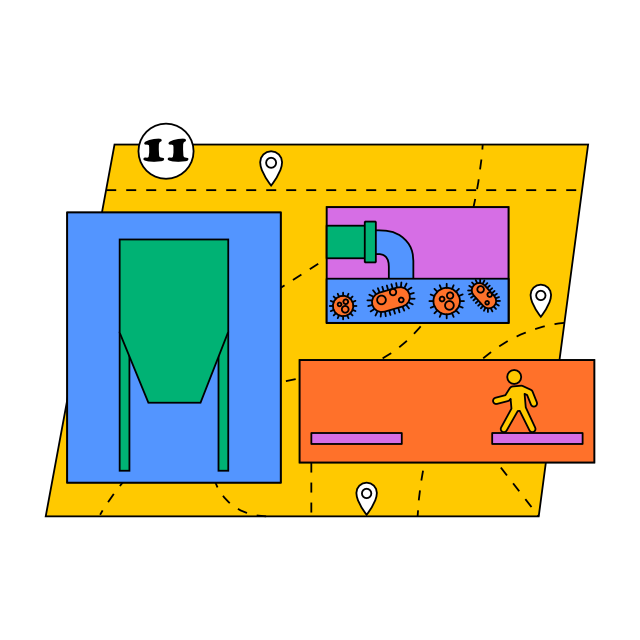SDG 11Sustainable cities and communities
Human settlements of the future: inclusive, safe, resilient, and sustainable
Overview
Today, 55% of our planet’s population lives in cities. According to the UN, the proportion will rise to 68% by 2050.1 Cities will need to meet the needs of the increasing number of their inhabitants – provide affordable housing, transport, employment and basic services such as education, health care and safety. The vision of the near future is sustainable and smart cities operating on the basis of the “data society” in which traffic lights, lighting and recycling are all operated by technology. As the number of people living in cities will keep increasing, cities might reach their growth limit. That is why sustainable cities are a key vision of the future. How can we make such cities pleasant to live in? Can the vision of sustainability help with poverty and air pollution? Cities and villages alike will be facing huge challenges – from carbon neutrality to a circular economy and cleaner air, transport, and a healthier environment. It is also important to shrink the gap between the poor and the rich, for communities to be more cohesive and close-knit and for cities to be accessible to all.
Solution and Key Innovations
According to Schroders European Sustainable Cities, Amsterdam is Europe’s sustainability leader, followed by London and Paris with Copenhagen, with Oslo and Stockholm closely behind. All these cities use renewable energy, their public transport is cleaner, they provide public charging stations for electric cars, reduce single-use plastics, take care of air quality, set climatic plans and carbon neutrality goals. As cities are expanding, the construction industry will need to reflect the requirements for sustainable materials. Recyclables and natural materials such as bamboo, straw or wool are becoming prominent. French scientists are promoting concrete recycling; Tokyo University researchers have developed a method to mix used concrete with recycled wood. This allows them to avoid using cement, which produces up to 2.8 billion tonnes of CO2 a year, about 8% of global emissions and four times more than air transport.2 Another technological element in the construction industry is the energy performance of buildings and water management. Electricity, which powers appliances, lighting, and heating, can come from solar or geothermal sources. The buildings of today could move toward the model of the passive house with excellent thermal insulation, special ventilation, and heat recovery. The passive house is one of the promising ways of approaching sustainable architecture.
Water management can be aided by technologies for rain or wastewater treatment, such as the thermal hydrolysis which decreases the amount of by-product that produce biogas. Another solution, fulfilling three functions simultaneously, is microbial fuel cell technology which uses bacteria to treat wastewater. Sustainable transport is particularly about cycling and the walkable city – an urban design concept where basic services are accessible and within reach to all. Technologies that can help promote sustainable transport are mainly electric cars, shared cars and zero-emission urban transport. The movement of people within cities is also linked to digitalisation. If working and studying online is permitted, people will be able to travel less around the city. Involving digitalisation and the vision of a smart city are already being put into place in Vienna, for example.
Key Questions
- How to expand cities without burdening our planet?
- Can sustainable cities help reduce social gaps?
- How can technology help develop sustainable cities?
Key Words
Urbanism, circular economy, recycling, carbon neutrality, digitalization
Interesting Resources
- 6 features of sustainable cities: easy movement around the city without a car, electric car charging stations, access to green spaces, improved water saving and waste management, promoting urban agriculture, and green architecture
- A French company produces both building and interior materials from textile waste
- The Czech company Cyrkl is Europe’s largest digital waste platform helping thousands of companies turn waste into a resource
- Greek scientists are developing a bio-electro-chemical wastewater treatment system
- THE EU Concept SUMP: Sustainable Urban Mobility Plans
- The Czech company ERC-tech recycles concrete, bricks, and other materials
